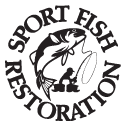CONTACT US:
Florida Fish and Wildlife
Conservation Commission
Fish and Wildlife
Conservation Commission
100 Eighth Avenue SE
St. Petersburg, Florida 33701
727-896-8626
|
|
|
Tampa Bay Estuary Program
100 Eighth Avenue SE
St. Petersburg, Florida 33701
727-893-2765
|
|
|

|
|
Funding for this project was obtained through Tampa Bay Estuary Program specialty license plate funds.
|

|
|
Additional funding for this project was obtained through the Federal Aid in Sport Fish Restoration Fund.
|
|
|
 |
Often anglers are required to release saltwater fish they catch to help maintain fish populations. More and more anglers are practicing “catch-and-release” to do their part to preserve marine fisheries while they enjoy their outdoor fishing experiences.
Research has shown that you can significantly increase the survival rate of fish you catch by handling them properly during the release. This information offers tips on how you can properly handle and release saltwater fish.
How to Begin
- Use tackle heavy enough to land a fish quickly to reduce its exhaustion. An exhausted fish is likely to be weak, making it vulnerable to predators or die upon release.
- Use non-stainless steel hooks as they will dissolve if they remain in a fish.
- Use non-offset circle hooks when fishing with natural bait to avoid gut-hooking a fish. Circle hooks tend to hook fish in the jaw, making them easy to remove.
- Bend barbs down on hooks so they can be removed with less damage to a fish.
- Keep release tools handy.
Handling Your Catch
- Handle fish as little as possible and only with wet hands – never with a towel.
- If a fish must be lifted from the water, support its weight horizontally.
- Use a venting tool if necessary to release pressure in a fish taken from deep water.
Removing the Hook
- Back the hook out the opposite way it went in.
- If a hook is deep in a fish’s throat or stomach, cut the line as close as possible to the hook – the hook will eventually dissolve inside the fish.
- Use a de-hooking device if needed to help remove hooks safely.
The Release
- Gently release a fish head first into the water.
- If a fish is exhausted, revive it before releasing it by passing water over its gills – move it forward in the water with its mouth open.
- If a released fish does not swim away, recover it and try to revive it again.
Releasing a fish safely and free of harm is key to helping it survive.
Additional information about catch-and-release is available from FWC's Division of Marine Fisheries Management, NOAA Fisheries Service, and Florida Sea Grant.
|
If you have any questions, comments, or suggestions about this Web site, please e-mail us at Boating_Guides@MyFWC.com.
Would you like to receive notices of changes to this Web site and the Boating and Angling Guide to Tampa Bay? If so, please e-mail us and include SUBSCRIBE-TAMPA in the subject line.
|





















